Unsolved Mystery: The Disappearance of Danny Walsh and the Legend of Cement Shoes
I always enjoy the Cross Sound Ferry ride from Orient, NY to New London, CT. I look out over the water and imagine what lies beneath. Somewhere underneath the rolling waves are four centuries of shipwrecks, lost fishing nets and tackle, Coke bottles, busted lobster traps, and the remains of Danny Walsh, encased in cement shoes.
Danny Walsh was one of the most successful bootleggers during Prohibition, and the last major Irish-American gangster in Southern New England. He was kidnapped and murdered in 1933. His remains were never found.
A first generation Irish-American, Walsh was born in 1898 in the neighborhood of “Valley Falls” in Cumberland, Rhode Island. He was the son of John and Mary Walsh and was the second of nine children. When Prohibition started Walsh was earning $5 a day working in a Pawtucket, Rhode Island mill. Walsh became one of the most famous rum-runners during the 1920s. He assembled a formidable operation which included planes, automobiles and a fleet of boats. These speedboats were armor plated with layers of New York telephone directories to ward off Coast Guard machine gun fire. The boats would go out to the 12 mile limit, known as “Rum Row” to meet ocean-going vessels. Walsh’s exploits were chronicled in local papers, including the infamous incident of December 1929, when one of his smuggling speedboats, “The Black Duck,” came under fire by a Coast Guard gunship.
Rhode Island was the most Catholic state in the country, and many of the state’s Irish, Italian, French-Canadian and Polish citizens regarded Prohibition as a Protestant plot against their social life. Enforcement was lax.
As the Roaring 20s roared along, Walsh prospered and became a protégé of Charles (King) Solomon, Boston’s legendary crime boss. Solomon made Walsh the northeast distributor of high-quality Canadian alcohol. Sam and Harry Bronfman of Seagram Company were happy to sell legal Canadian whiskey at 65 cents a gallon. Walsh could sell the same gallon for $7 in the U.S.
By 1925 Walsh had made a huge fortune as one of the country’s largest bootleggers. Considering himself a “gentleman farmer” Walsh spent a lot of money on thoroughbreds which he raised on his farm in Charlestown, Rhode Island. He became an accomplished horseman. Affable and politically savvy, he kept his political allies and bankers stocked with hard liquor. In 1928 Federal authorities charged him with tax evasion, arguing he owed the government $350,000 in unpaid income taxes. Walsh bargained the figure down and paid. When anyone asked, he told people he was a hobby farmer who had made shrewd investments.
Walsh was rumored to be part of the “Irish Combine,” a group of Irish gangsters heavily involved in bootlegging. They included Big Bill Dwyer and Owney Madden of New York City, Larry Fay on Long Island, NY, Walsh in Providence, RI, Daniel O’Leary of Philadelphia, PA and Joseph Kennedy of Boston, MA. 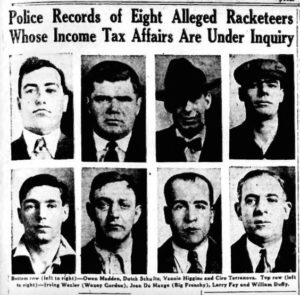
One of the most notorious bootleggers during Prohibition was Carl Rettich, a New Jersey born criminal who got his start at age 17 in the mob-controlled live poultry business. He overheard a plot to murder a wholesale poultry dealer but kept his mouth shut. In September 1924, 30-year-old Rettich was charged with the murder of Frank d’Agostino, a gangster who was known by police as a “hijacker” of bootleg liquor. D’Agostino told friends that he planned to meet with Rettich to discuss returning the whiskey he had stolen from him. Instead he ended up on a pier with four bullets in his neck and chest. Rettich was an associate of George F. (“Doc”) Moeller’s, alleged whisky smuggler, who disappeared a few weeks earlier with $150,000. The police were unable to trace his whereabouts, although they believed he fled to Germany.
Rettich relocated to Rhode Island at Walsh’s invitation. Together they expanded operations. Known to his Warwick Neck, RI neighbors as “Charles Ryerson,” area people believed him to be a respectable attorney who had moved to Rhode Island to care for his aging father. Rettich threw parties for politicians and the local elite, letting people fire his machine gun on the front lawn.
On January 23, 1933, Charles “King” Solomon was gunned down in the men’s room at Boston’s Cotton Club. His boss and protector dead, ten days later Danny Walsh disappeared.
Walsh was last seen the night of February 2, 1933 at the Bank Café in Warwick, RI having dinner with Rettich, Rettich’s young associate, nicknamed “Wireless,” and two other unidentified men. A waitress testified that Walsh and Rettich were in good spirits, but a second witness disagreed, claiming the men had an argument over an unpaid debt. Rettich paid Walsh $30,000 to settle it. Danny Walsh disappeared. Local police and a Federal inquiry into his disappearance went nowhere.
The Associated Press ran a story on June 3, 1935 speculating that Walsh “was stood in a tub of cement until it hardened about his feet, and then thrown alive into the sea.” The AP reported it was just a “grisly underworld tale.”
According to unnamed informants, Walsh had been taken to the basement of Rettich’s home and clubbed. He was put in a box that was filled with concrete and dumped in the ocean. Walsh’s girlfriend was given the same treatment for being too vocal about his disappearance. Another rumor had Walsh’s body stuffed in a barrel filled with cement and dumped in the sea off Block Island. No bodies were ever found. Police Captain Alfred Stevens of Providence, RI believed Rettich murdered Walsh to take full control of the business and reclaim his $30,000 payment.
The Providence Journal received a tip that some “Chicago interests” might have staged Walsh’s kidnapping, upset he was encroaching on their territory in western Massachusetts. The Journal’s front-page story on February 11, 1933 reported that Walsh might have been kidnapped for a $40,000 ransom. A few days after his disappearance, Walsh’s brother, Joseph Walsh, received a ransom note demanding $40,000. Joseph Walsh, Carl Rettich, and two other men traveled to the Copley Plaza Hotel in Boston. There they handed the $40,000 to a man that none of them saw. He collected the money by slipping “his hand through a hotel room door.” Despite promises from the kidnappers, Walsh never resurfaced.
Over the next several years authorities would often investigate unidentified murder victims in hopes of finding Danny Walsh; “any time a suspicious corpse was found—in Massachusetts or Rhode Island woods—or a skull turned up in a fishing net off Block Island, police checked it against Danny Walsh’s dental records.” The bodies of Danny Walsh and his girlfriend were never found. What happened to Danny Walsh? No one knows, but what is left of him is probably at the bottom of Block Island Sound.
Rettich’s luck ran out in 1935. He was convicted on multiple charges for a Fall River, MA mail heist that netted $129,000. He was sentenced to 25 years in prison and spent the rest of his life there. Rettich is footnote now in Prohibition history, but he is the inspiration for the enduring legend of cement shoes. 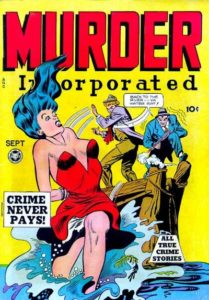

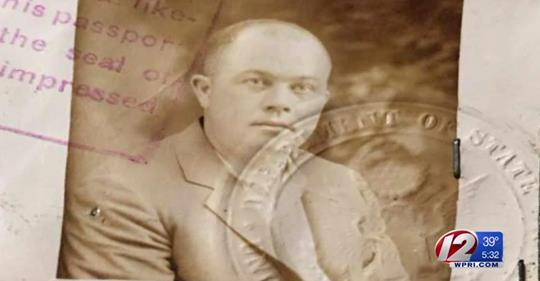

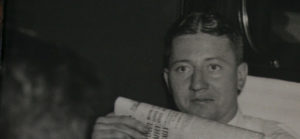
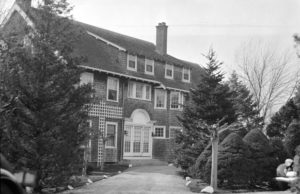
August 14th, 2020 at 12:18 pm
Hi Karen,
This is great! I agree with you; I think that Rettich had Walsh killed as well. Walsh and Rettich kept separate books because, of course, they did not trust one another. It’s such a fascinating story; the “Crime Castle” murder/robbery was one of my favorite chapters to research. Let me know if you would like any additional information. I visited the National Archives in Waltham, which has transcripts of the Fall River Robbery, which occurred after the Walsh murder.
August 14th, 2020 at 3:47 pm
Hi Debra, Thanks for writing! I enjoyed researching the blog post. The story of Danny Walsh and Carl Rettich would make an interesting film or documentary. I hope someone is inspired to try. Thank you for writing. It was great to connect with you on a mystery of mutual interest!
August 29th, 2020 at 8:53 am
i have always been fascinated by danny walsh and carl rettich. there story would make a great film. i also found a photo of them when they were friends and partners in the bootlegging trade. i have about 4 photos of walsh which i will post on here soon.
August 29th, 2020 at 10:35 am
Cally, that would be great. Thank you. What do you think became of Danny Walsh?
January 25th, 2021 at 1:31 am
i dont know what became of walsh,but i think his remains really are at the bottom of the ocean.
March 18th, 2024 at 7:29 pm
I noted the mention of Joseph Kennedy of Boston. I don’t think many people are aware that the father of one our presidents made his money that way. I believe he opened a bank to become ‘legit’